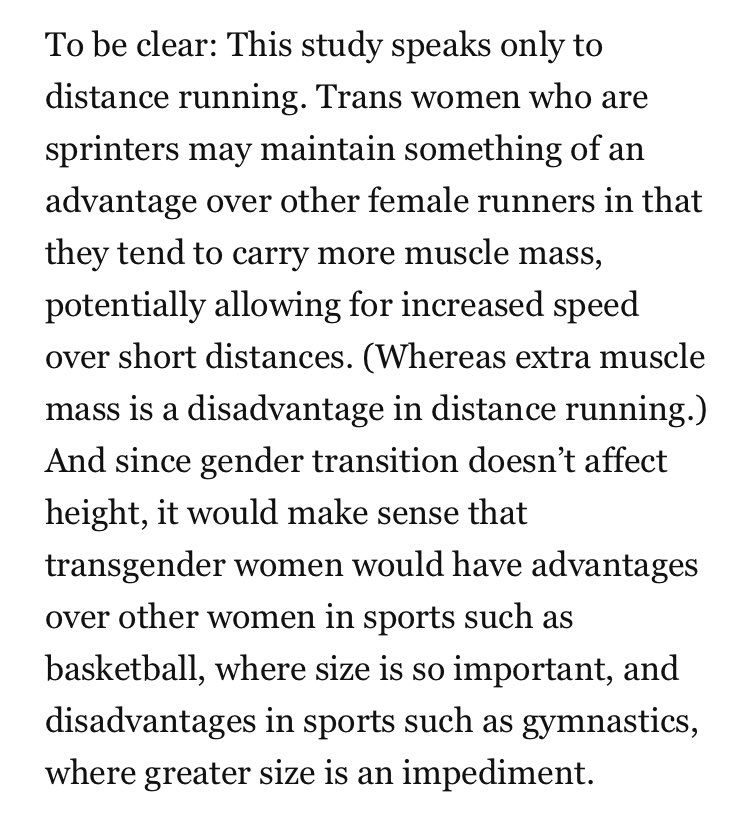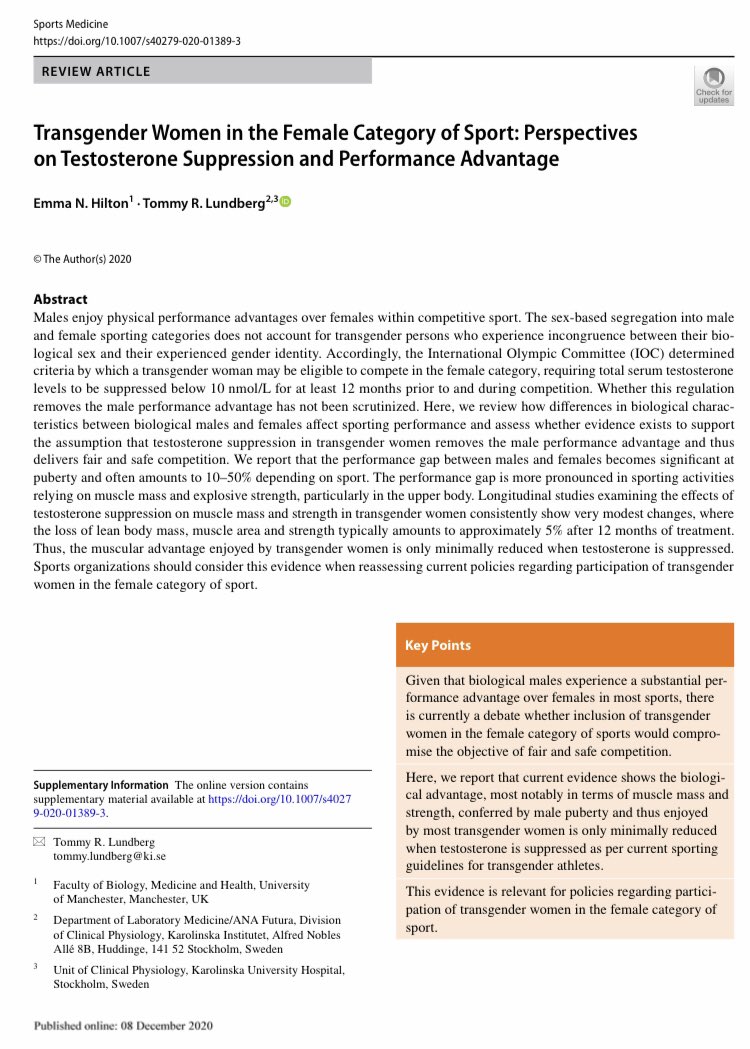
Some Harper nuggets in here.
1. Queries lack of control for training, hormone status, test conditions. These same limitations would render her own 2015 study inconclusive.
1. Queries lack of control for training, hormone status, test conditions. These same limitations would render her own 2015 study inconclusive.
https://twitter.com/NBCNews/status/1346418438860906498

2. Favours training difference to explain retained running advantage, yet argues that the (artefact-riddled, suboptimal) tests of muscular endurance are valid. 

A reminder that transmen far surpassed male performance in these muscular endurance tests. Is she saying that transmen would be better than males at team sports?
3. Argues that as long as transwomen, even though they retain advantage, cross some ‘middle threshold’ between male and female performance gaps, it’s all fair.
Amazing.
Amazing.

It’s worth noting that this is, yet again, Harper acknowledging retained performance advantage in transwomen. Please see her presentation to World Rugby, and examples of interviews.
washingtonpost.com/opinions/do-tr…
washingtonpost.com/opinions/do-tr…

In fact, it’s very clear that Harper has shifted from arguing there is no advantage (that would fly in the face of research) but that the advantages don’t matter ideologically, or that they are offset by other disadvantages. 

For example, she claims Tifanny Abreu, a volleyballer who transitioned from short/light male to tall/heavy female, is actually a ‘defensive liability’.
Such a defensive liability that Abreu transitioned from national male to international female.... 🙄

Such a defensive liability that Abreu transitioned from national male to international female.... 🙄


And from the study’s author, this assertion for which there is no evidence, and plenty to dispute it.

https://twitter.com/FondOfBeetles/status/1329483742323335168?s=20

• • •
Missing some Tweet in this thread? You can try to
force a refresh





